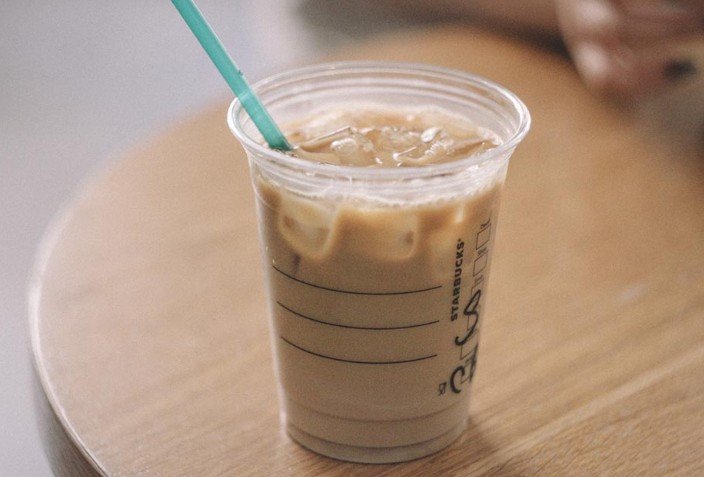If you’re a coffee lover looking to stay refreshed, iced coffee might be your go-to drink. But you might wonder, does iced coffee have caffeine like its hot counterpart? Understanding the caffeine content can help you manage your energy levels and avoid any surprises.
Iced coffee isn’t just cold coffee; it often contains just as much caffeine as a regular cup. Whether you’re grabbing a quick iced brew from your favorite café or making it at home, knowing how caffeine works in iced coffee lets you enjoy your drink without guessing. Let’s dive into what affects the caffeine content in iced coffee and how it compares to other coffee options.
Understanding Iced Coffee
Iced coffee offers a refreshing alternative to hot coffee without compromising caffeine content. Knowing what iced coffee is and how it’s made clarifies expectations about its caffeine strength.
What Is Iced Coffee?
Iced coffee is brewed coffee served cold, often poured over ice cubes. It consists of the same coffee grounds and brewing methods as hot coffee, keeping the flavor profile and caffeine comparable. Unlike cold brew, which steeps coffee grounds in cold water for hours, iced coffee starts with hot brewed coffee cooled down quickly.
How Is Iced Coffee Made?
Iced coffee is made by brewing hot coffee and then cooling it rapidly by pouring it over ice or refrigerating. You can brew it using drip, pour-over, or espresso methods, then chill it for immediate consumption. Some variations include adding milk, sweeteners, or flavors after cooling, but these additions don’t affect the underlying caffeine content.
Caffeine Content in Iced Coffee
Iced coffee contains caffeine, with levels influenced by brewing methods and coffee-to-water ratios. Understanding these factors helps you gauge caffeine intake more accurately.
Factors Affecting Caffeine Levels
- Brew Strength: Stronger brews usually have more caffeine per serving.
- Coffee Type: Arabica beans have 12-16 mg of caffeine per gram; Robusta beans contain 22-28 mg per gram.
- Serving Size: Larger servings increase overall caffeine content.
- Brewing Method: Drip, pour-over, and espresso extraction rates differ, affecting caffeine.
- Dilution: Adding ice or water decreases caffeine concentration but not total caffeine unless volume changes.
- Extraction Time: Longer brew times extract more caffeine, especially in cold brew.
Comparing Iced Coffee to Hot Coffee
You consume similar caffeine amounts if iced and hot coffee use the same preparation. For example, an 8-ounce cup of hot drip coffee and an 8-ounce iced coffee brewed by the same method generally contain 80-120 mg of caffeine. Differences arise when iced coffee includes dilution or uses espresso shots, which pack more caffeine per ounce but fewer ounces per serving.
Health Impacts of Iced Coffee Caffeine
Iced coffee delivers caffeine similarly to hot coffee, producing both positive and negative health effects. Understanding these helps you manage your intake effectively.
Benefits of Moderate Caffeine Intake
Moderate caffeine intake, defined as 200-400 mg per day, supports alertness and cognitive function. It enhances focus, reaction time, and mood according to multiple studies published by the Mayo Clinic and the FDA. Caffeine also may improve physical performance by increasing adrenaline levels. Furthermore, research from the American Journal of Clinical Nutrition links moderate coffee consumption to a reduced risk of neurodegenerative diseases like Alzheimer’s and Parkinson’s. For reference, an 8-ounce serving of iced coffee usually contains between 80-120 mg of caffeine, fitting well within safe daily limits if consumed in moderation.
Potential Risks of Excessive Caffeine
Excessive caffeine intake, above 400 mg daily, can trigger insomnia, nervousness, and increased heart rate. The FDA highlights risks including digestive issues, anxiety, and elevated blood pressure. Sensitive individuals, such as those with heart conditions or pregnant women, face higher risks even at lower doses. Overconsumption from multiple iced coffee servings or combined caffeine sources leads to these effects. Large iced coffee portions or multiple espresso shots can cause caffeine to exceed recommended limits. Monitoring your total daily caffeine intake helps avoid adverse symptoms and supports overall health.
How to Control Caffeine Intake with Iced Coffee
Managing your caffeine intake with iced coffee involves selecting the right options and customizing your drink to fit your daily limits.
Choosing Low-Caffeine Options
Pick coffee beans with naturally lower caffeine levels, such as Arabica instead of Robusta. Opt for smaller serving sizes, like a 6-ounce cup rather than 12 ounces, to reduce total caffeine. Select single espresso shots instead of doubles to lower concentration. Choose cold brew with caution, since it can have higher caffeine unless diluted adequately. Request decaffeinated iced coffee when available, which typically contains 2-5 mg of caffeine per serving.
Customizing Your Iced Coffee
Adjust the brewing strength by requesting a lighter brew or adding more ice to dilute caffeine concentration. Add milk or non-dairy alternatives; although they don’t reduce caffeine, they change volume and dilution. Avoid adding extra espresso shots or caffeinated syrups to keep caffeine in check. Prepare iced coffee at home using controlled brewing methods, such as pour-over with measured coffee grounds, to ensure caffeine remains within your desired range.
Conclusion
You can enjoy iced coffee knowing it usually packs the same caffeine punch as hot coffee. By understanding the factors that influence caffeine levels, you have the power to tailor your drink to fit your needs. Whether you prefer a milder sip or a stronger boost, making informed choices helps you stay in control of your caffeine intake. Keep experimenting with brewing methods and serving sizes to find what works best for you while enjoying your refreshing iced coffee.

